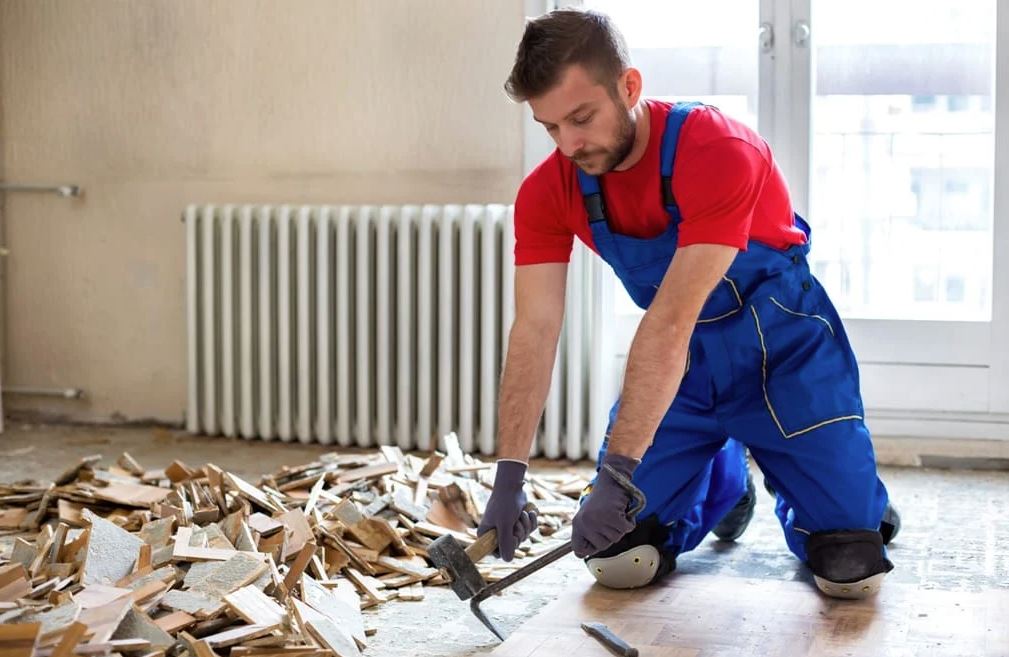The charm of an old home often lies in its unique design elements, rich history, and character-filled nooks and crannies. More and more people are drawn to the allure of these aged properties, embracing the opportunity to infuse new life into them through renovation. However, renovating old homes is challenging, and one of the most significant concerns is asbestos.
Asbestos, a once widely used construction material, is prevalent in many older homes. Its resistance to heat, electricity, and corrosion led to its extensive use in various building materials, including carpentry, notably for our discussion. Yet, despite its useful properties, asbestos is far from harmless. Over time, researchers discovered that asbestos fibres, when inhaled, can lead to serious health complications, including lung diseases and cancer.
This makes understanding asbestos challenges in carpentry a critical aspect of renovating old homes. The blend of restoration and safety makes the process complex, but you can navigate these challenges effectively with the right knowledge.

This blog post aims to guide you through identifying, handling, and renovating asbestos-contaminated carpentry, all while maintaining the intrinsic charm of your beloved old home.
Understanding Asbestos
Asbestos is a group of naturally occurring silicate minerals made of fine, durable fibres resistant to heat, fire, and numerous chemicals. It was once admired for these properties, and the construction industry took advantage of them for many decades. Particularly in carpentry, asbestos was used extensively in products like asbestos-cement sheets, insulation, roofing, and even some types of paint.
The use of asbestos in home construction soared from the early to the mid-20th century. It was viewed as a miracle material, providing heat insulation and fireproofing to homes relatively cheaply. As a result, many homes built before the 1980s are likely to contain asbestos in some form.
However, as early as the 1960s, it became increasingly clear that asbestos posed serious health risks. When disturbed, asbestos materials can release microscopic fibres into the air. If inhaled, these fibres can lodge into the lungs and cause asbestosis, lung cancer, and mesothelioma. Given these health implications, the presence of asbestos in an old home should not be taken lightly.
How to Identify Asbestos in Carpentry
Asbestos was commonly used in many carpentry applications, including insulation, roofing, siding, and wallboards. Other possible locations include window caulking, adhesives, and certain types of paint. In many cases, asbestos isn’t easily identifiable by sight alone. It often blends seamlessly with other materials, making it nearly invisible to the untrained eye.
There are, however, a few signs that may suggest the presence of asbestos. Asbestos materials may have a fuzzy or fibrous appearance and crumble or powder easily when touched. However, these signs are only sometimes present or noticeable, especially if the asbestos-containing material is still in good condition.
Given the health risks involved and the difficulty in visually identifying asbestos, it is strongly recommended to hire a professional to conduct an asbestos test when dealing with older homes. Professional asbestos inspectors are trained to recognize and test for asbestos accurately, helping to ensure your safety during a renovation.
Legal and Safety Requirements for Handling Asbestos
Handling asbestos is governed by strict local and federal regulations. These regulations aim to minimize the risk of asbestos exposure and to ensure safe removal and disposal. For homeowners, the most crucial regulation to understand is that the removal of asbestos, particularly large amounts, should be handled by licensed professionals.
Engaging licensed asbestos abatement professionals is paramount for safety and legal reasons. Professionals like those at aceasbestosremovalgoldcoast.com.au have the training, experience, and equipment necessary to remove asbestos safely and in compliance with all regulations.
When dealing with asbestos, several safety measures must be taken.
These include using protective equipment, setting up proper ventilation, wetting asbestos materials to prevent fibres from becoming airborne, and sealing off the work area to prevent contamination of other parts of the home.
The Asbestos Abatement Process
The asbestos abatement begins with a thorough home inspection by a licensed professional. This inspection will identify areas of concern and the extent of potential asbestos contamination.
The professional team will plan and implement a containment strategy after the inspection.
This strategy usually involves sealing off the contaminated area with plastic sheets to prevent the spread of asbestos fibres during removal. Professionals will then methodically remove the asbestos materials and dispose of them safely according to local regulations.
Post-abatement cleanup and verification are vital to ensure all asbestos has been removed. A thorough vacuum using HEPA-filtered vacuums will be carried out, and air quality tests will be performed to ensure the area is safe for habitation.
Retrofitting Carpentry Work After Asbestos Removal
Once asbestos has been safely removed, it’s time to assess the structure’s integrity. Some structure parts might require reinforcement or replacement depending on the extent of asbestos use in the original carpentry.
Modern, safe materials should be selected for replacement, taking into account aesthetic and functional requirements. Ideally, these materials match or complement the style of your old home, preserving its unique charm while ensuring safety.

Engaging a professional carpenter with experience in old home restoration can be beneficial. They can recreate vintage designs using modern materials, ensuring your home retains its character and charm while adhering to modern safety standards. It’s a delicate balance, but with careful planning and execution, you can bring your old home into the present without sacrificing its unique history.
Renovating old homes is a fascinating journey through history, imbued with the exciting promise of transformation. However, one must pay attention to the critical issue of asbestos when embarking on this path.
As we’ve explored, asbestos presents a significant challenge and health hazard in renovating older properties. Understanding its presence, identifying it in various elements of carpentry, and being aware of the correct procedures for safe removal is integral to a successful and safe renovation project.
The renovation journey requires us to balance two equally important aspects – preserving the timeless charm of an old home while ensuring the safety of its inhabitants. This delicate task can seem daunting, but it is achievable with the right knowledge and professional assistance. Incorporating modern, safe materials in place of asbestos offers safety and an opportunity to blend the old with the new, creating a unique aesthetic that respects the past while embracing the present.
Embarking on a renovation project armed with this knowledge can transform the intimidating into the manageable. We hope this guide has equipped you with the knowledge you need to navigate the challenges of asbestos in your renovation journey. With careful planning, collaboration with professionals, and a respectful approach towards the historic charm of your home, you can confidently create a safe and beautiful living space for years to come.





